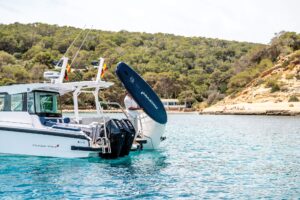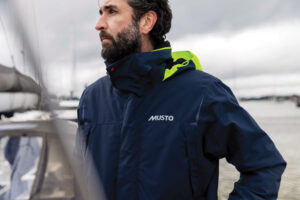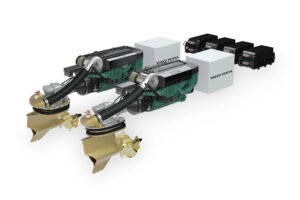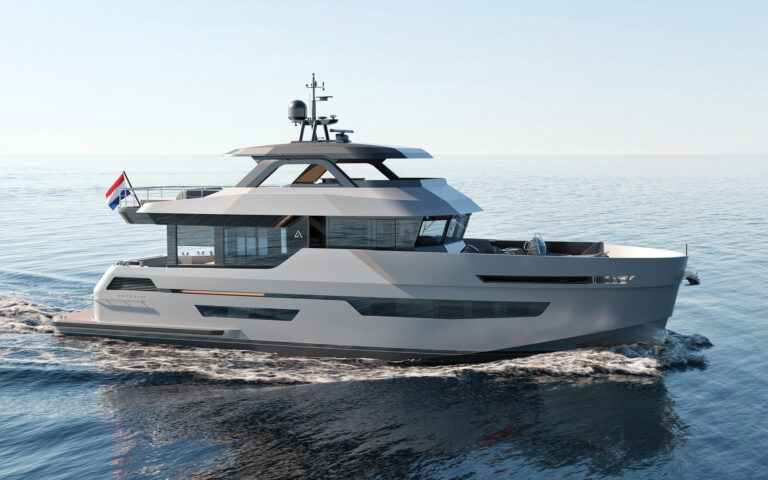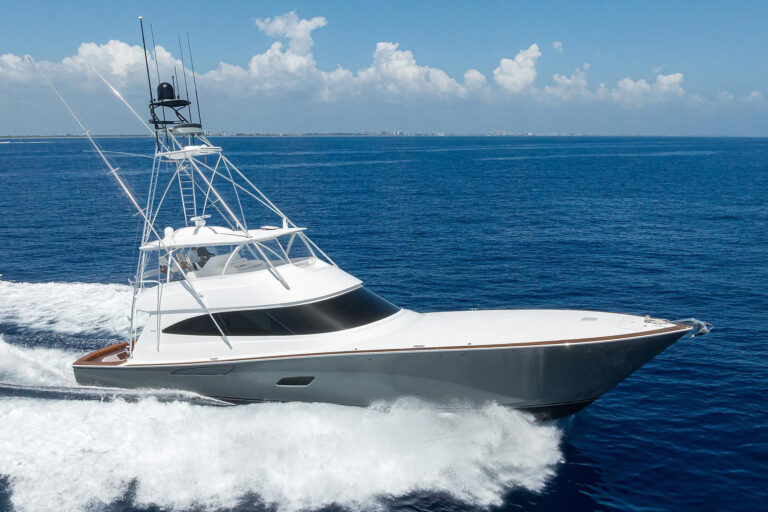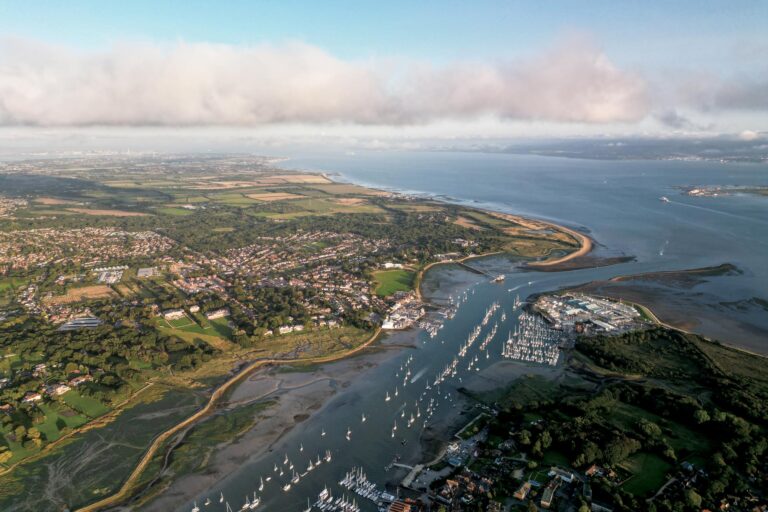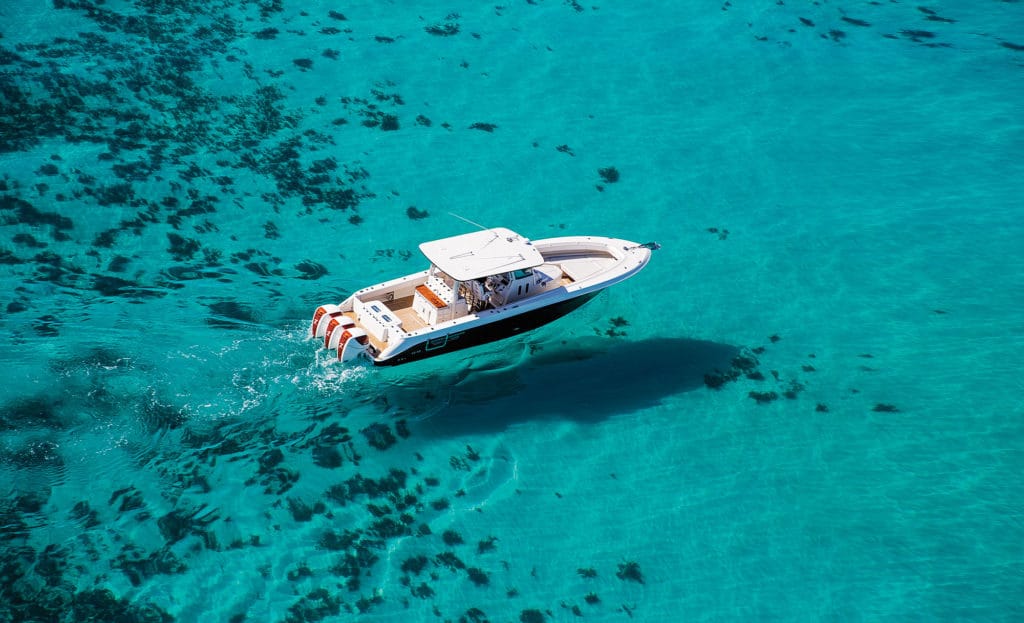
When Volvo Penta, famous for its omnipresent IPS engine system, acquired outboard-engine manufacturer Seven Marine this past summer, owners of midrange boats gasped at the possibilities. Seven Marine was less than a decade old, having started production in 2013, but it had done for gasoline-powered engines what Volvo Penta has done for diesels: looked to automotive technology in seeking out performance enhancements.
“Outboards are vertical; they stand up on their nose,” says Seven Marine Vice President Brian Davis. “If you open your car and look at your engine, the engine is flat. We were the first ones to mount a flat engine in an outboard.”
“Luxury is not top speed. It’s high-speed cruise with enough performance that it’s exciting.”
Brian Davis, Seven Marine Vice President
Advertisement

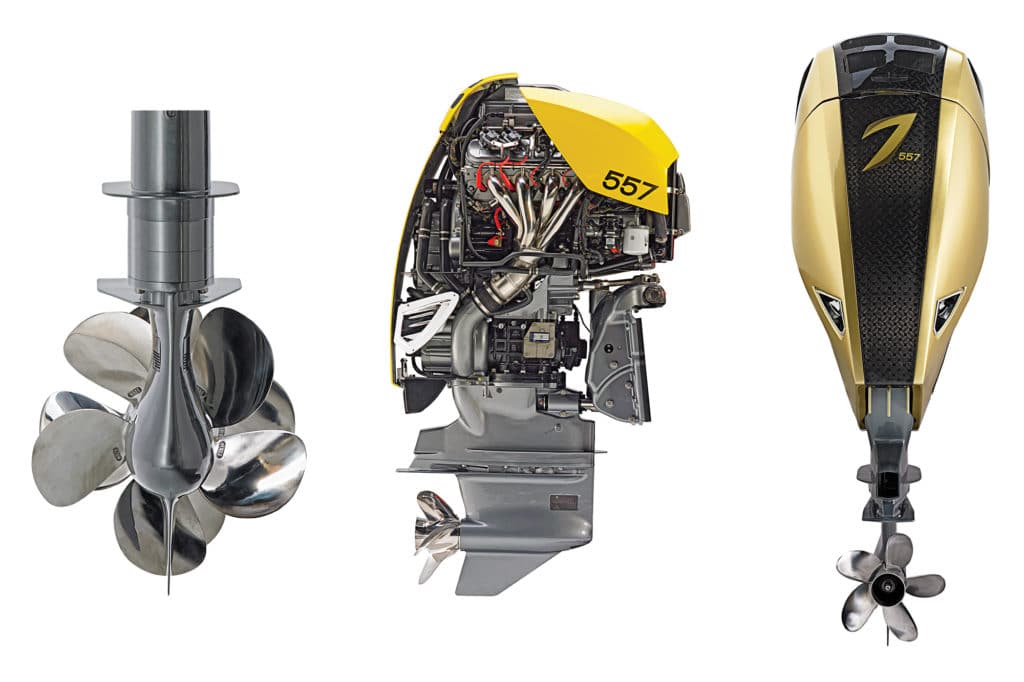
The partnership should continue to advance what Davis calls the “superconsole” market: boats in the 48- to 58-foot range (and, soon, beyond that). Seven Marine’s 557 hp and 627 hp models — horsepowers previously unheard of in outboards — gave builders new ideas about how those boats could be built and used, just as Volvo Penta’s IPS has done for inboard designs.
“A center console boat is the pickup truck of the boat market, but when you make a CC perform like a Porsche 911 with the reliability of a Lexus, you kill the performance-boat market,” Davis says. “We’ve created the ability for the superconsole category to exist.”
Whereas midrange boats have long been a destination unto themselves (many yachtsmen buy a 50-footer to hang out on all day and night with friends and family), the new thought for these boats is as entertainment platforms for superyachts, waterfront homes and more.
“These boats are not your destination,” Davis says. “They’re the access to the destination.

